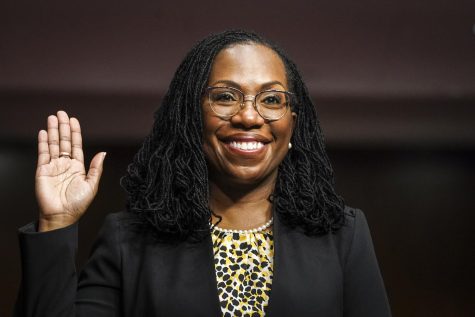The fall of Afghanistan

Credit: Wall Street Journal
While the United States is currently crumbling under a second wave of COVID-19, nearly 7,500 miles away a country is facing a different national problem. Afghanistan is struggling to take control of its government after the Taliban took full power on Aug. 15, nearly two decades after United States troops removed the group from Kabul, Afghanistan during their first attempt at a revolution. Its citizens are fleeing the country as fast as possible in hopes of escaping before the Taliban steals their lives along with their lands and rights.
“It is terrifying seeing what is happening over there right now on the news, especially as a feminist. My heart goes out to all the women in Afghanistan right now with their basic human rights at risk as the Taliban retakes control,” Charlotte Luina, sophomore, said.
Founded in 1994, the Taliban is a military group made of former Afghan resistance fighters. They are currently waging a war against their home country, fighting for power and the ability to enforce their interpretation of the Islamic law on the citizens while also purifying the nation with only Afghan and Islamic influence. The Taliban has overthrown the country for the second time, killing and imprisoning thousands who refuse to obey their rules or attempt to flee.
“Experts say the Taliban is stronger now than at any point since 2001. It launched an offensive amid the U.S. troop withdrawal and, by summer 2021, controlled over half of Afghanistan’s districts,” the Council on Foreign Relations said.
The Taliban has promised to be more tolerant of women than they were the first time they seized power, but many doubt these claims and are fearing for their lives and the equal rights they have tirelessly fought for over the past twenty years. Despite their many statements assuring they will not discriminate, the Taliban’s violence and aggression against women has spiked across the country, with women suffering painful beatings, stonings, and even death. Women are no longer happily roaming the streets of Afghanistan, for if they go out in public, they risk facing punishment.
“‘You are outside working with the community, with girls, with women — but suddenly, you go in a prison, and you can’t do anything for anyone (…) now every Afghan woman [is] in prison in their room. They cannot go outside. They cannot be like before,’” Friba, an anonymous Afghan woman, said to the Washington Post.
One of the biggest debates of this revolution is: who is to blame? Many have accused President Biden of withdrawing the United States troops from Afghanistan, while others claim former President Trump was the one who had decided to pull the soldiers in the first place. Some believe neither is at fault, and instead the dilemma began when Afghan President, Ashraf Ghani, fled the country to escape the Taliban and possible assassination. While none of these presidents have been entirely assigned the responsibility, they each had a different influence in the fall of Afghanistan.
“It [the war in Afghanistan] is [because of] Trump’s policy (…) Biden was just trying to make the situation better but should not be blamed for the war. The war is mainly the Afghanistan president’s fault, but everyone contributed to it a little, “Josh Gomez, freshman, said.
Afghanistan struggled to recover from the 1994 revolution, but the second Taliban takeover has continued to pick apart the country to a point where they may never be able to fully repair themselves once again. No one person is to blame for the revolt; nevertheless, thousands suffer as they are stripped of their rights, their freedoms, and their homes.
For more information, check out these articles about: The Taliban, Women in Afghanistan, What is happening now, Events leading to the war

Hello, my name is Hailey, and I am a senior at Etowah. This is my fourth year on the Talon, and I am Editor in Chief. I am in a lot of various clubs at...





